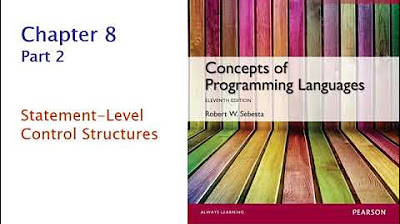Comandos break e continue em C
Summary
TLDRIn this educational video, the instructor introduces two essential programming commands: `break` and `continue`. The lesson revolves around solving a problem where the user must input positive integers, and the program calculates their average. The solution handles up to 15 inputs, stops the process if the user enters `0`, and ignores negative numbers. The video demonstrates how `break` interrupts the loop upon entering `0` and how `continue` skips negative numbers, ensuring only valid inputs are considered in the average calculation. The instructor explains these concepts through a hands-on coding example, emphasizing practical application and logic flow.
Takeaways
- 😀 The lesson focuses on two important commands: 'Break' and 'Continue', which are useful for controlling loops in programming.
- 😀 A problem is presented where the goal is to calculate and display the average of positive integers entered by the user, with some restrictions.
- 😀 The user can input up to 15 integers, and if they enter '0', the process is interrupted, which is handled by the 'Break' command.
- 😀 Negative integers should be ignored in the average calculation, and they are handled with the 'Continue' command, which skips further actions for negative inputs.
- 😀 The 'Break' command interrupts loops and is used to stop further input when the user enters '0'. This stops the loop and calculates the average of the integers inputted until that point.
- 😀 The 'Continue' command is used to skip negative numbers, ensuring they aren't counted in the sum or average calculation while continuing the loop for valid entries.
- 😀 The program tracks the number of total integers inputted (including negative ones) using a separate variable ('nTotal'), ensuring that only valid positive integers count towards the average.
- 😀 After implementing both commands ('Break' and 'Continue'), the program successfully calculates the average of positive numbers, excluding negative ones and stopping when '0' is entered.
- 😀 The 'Break' command can be useful in interactive processes, such as reading user inputs or processing data from files, where early termination may be necessary.
- 😀 The lesson concludes by explaining that using 'Break' and 'Continue' makes the logic of handling loops cleaner and more manageable, especially in interactive scenarios.
Q & A
What is the problem addressed in the script?
-The problem involves calculating and displaying the average of positive integers entered by the user. The program has constraints: a maximum of 15 integers can be entered, and the process should stop when zero is entered. Negative integers should be ignored in the calculation.
What two commands are introduced in the script and what are their uses?
-The two commands introduced are `break` and `continue`. The `break` command is used to interrupt loops, and `continue` is used to skip the current iteration of a loop when certain conditions are met.
How does the program handle the scenario when the user enters zero?
-If the user enters zero, the `break` command is triggered, which stops the loop and ends the calculation, effectively terminating the process.
How are negative integers handled in the script?
-Negative integers are ignored in the calculation. The `continue` command is used to skip over negative integers, ensuring they do not affect the sum or the count of valid numbers.
What role does the variable `nTotal` play in the program?
-`nTotal` is used to count the total number of integers entered by the user, including both valid and invalid (negative) numbers. It ensures that the program terminates after a maximum of 15 total inputs.
Why is the `count` variable necessary in the program?
-The `count` variable is used to track the number of valid positive integers entered by the user. This is important for calculating the average of only the positive integers.
What happens when the user enters more than 15 integers?
-The program stops processing after 15 integers, as it uses `nTotal` to ensure that no more than 15 numbers are processed, even if the user continues to input values.
How is the average calculated in the program?
-The average is calculated by dividing the sum of all valid positive integers by the count of those integers. This calculation is only performed if there are valid integers to calculate the average from.
What happens if the user enters no valid positive integers?
-If no valid positive integers are entered, the program will display a message indicating that no positive numbers were entered, and no average is calculated.
Can the program handle cases where the user inputs a mix of positive, negative, and zero values?
-Yes, the program is designed to handle mixed inputs. Negative values are ignored, zero triggers the termination of the loop, and only positive values are considered for the average calculation.
Outlines

This section is available to paid users only. Please upgrade to access this part.
Upgrade NowMindmap

This section is available to paid users only. Please upgrade to access this part.
Upgrade NowKeywords

This section is available to paid users only. Please upgrade to access this part.
Upgrade NowHighlights

This section is available to paid users only. Please upgrade to access this part.
Upgrade NowTranscripts

This section is available to paid users only. Please upgrade to access this part.
Upgrade Now5.0 / 5 (0 votes)





